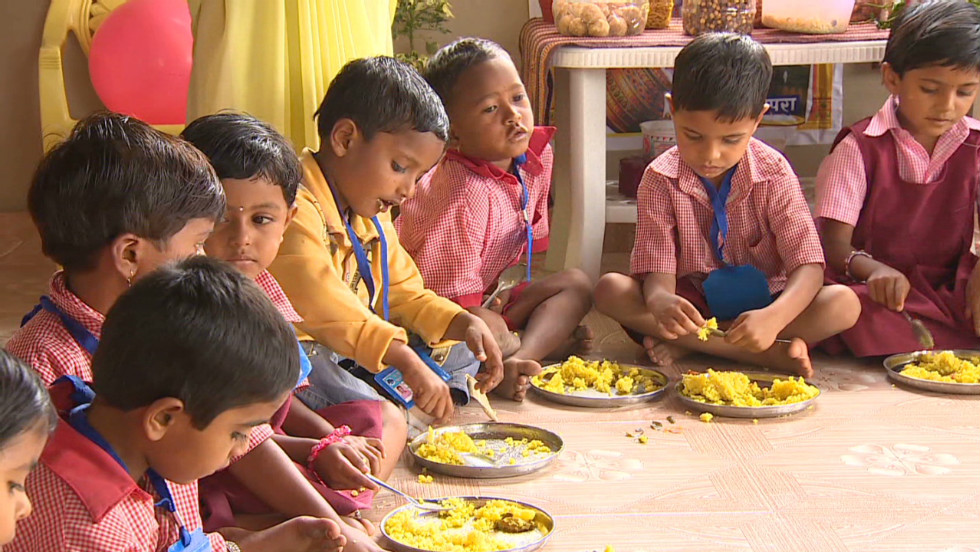Two wheat varieties and one pomegranate variety developed by Pune-based laboratories have been selected to fight malnutrition in the country.
Last month, PM had unveiled 17 bio-fortified crop varieties. Bio-fortified varieties of rice, maize, pearl millet, lentil, groundnut, linseed, mustard, soyabean, cauliflower, potato, sweet yam, and greater yam, too, have been identified for the cause.
As much as 15.2 percent of India’s population is undernourished, and 38.5 percent of children, below the age of five, have stunted growth due to poor nourishment. Thousands of children continue to remain iron and zinc deficient and are experiencing anemic conditions.
Iron, protein, zinc, and Vitamin C-rich variants of wheat and pomegranate have been mentioned in the latest book titled ‘Bio-fortified Varieties: Sustainable Ways to Alleviate Malnutrition’, released by the Indian Council for Agriculture Research (ICAR).
Agharkhar Research Institute has developed the wheat varieties, whereas the Vitamin C-rich fruit has been developed by ICAR-National Research Centre on Pomegranate.
Scientists say that the first wheat variety, identified by the name MACS 4028 (durum), can be cultivated in soil with low fertility, supported by rain-fed sowing, in rabi season. This wheat variant offers a yield of about 19.3 quintals per hectare. While popular varieties of wheat contain less than 10 percent protein, the MACS 4028 contains 14.7 percent protein.
With 39.5 ppm and 37.8 ppm of iron and zinc, respectively, the second variety, MACS 4058 wheat (durum), offers a yield of up to 29.6 quintal per hectare. Tests have been successfully carried out of both these variants, which mature in 102 days. They are presently under cultivation in both Maharashtra and Karnataka.
The MACS 4028 variety is also included by the Krishi Vigyan Kendra (KVK) programme for United Nations Children’s Fund (UNICEF) to alleviate malnutrition in a sustainable way and can boost the Vision 2022 “Kuposhan Mukt Bharat”, which is the National Nutrition Strategy. An endeavour to tackle the hidden hunger in the rural areas of India is being continued using the traditional plant breeding approach to achieve “Kuposhan Mukt Bharat.”
The wheat variety MACS 4028 had been notified by the Central Sub-Committee on Crop Standards, Notification, and Release of Varieties for Agricultural Crops (CVRC) for timely sown, rainfed condition of Peninsular Zone, comprising Maharashtra and Karnataka. Indian Council of Agricultural Research (ICAR) has also tagged this variety under the Biofortified category during the year 2019.
India grows six different commercial varieties of the pomegranate — Ganesh, Mridula, Arakta, Ruby, Phule Bhagwa and Phule Bhagwa Super. Being home to the finest varieties of pomegranate, the fruits have soft seeds with fewer acids. In fact, the fruit quality is much superior to those grown in Spain and Iran in edible quality and attractiveness.
Mainly grown in the western parts of Maharashtra and northwestern Karnataka, followed by Gujarat, Andhra Pradesh and Tamil Nadu, scores of villages in the districts of Solapur, Nasik, Sangli, Ahmednagar, Pune, and Satara makes Maharashtra the country’s pomegranate bowl with 71.21% of the total cultivated area under pomegranate in the country. The credit for developing an indigenous variety of pomegranate goes to G.S. Cheema, considered the father of Indian horticulture, who at Pune’s Ganeshkhind Fruit Experiment station worked with a local, wild type pomegranate variety known as Alandi, and released GBG-1 variety in 1936 for commercial cultivation in Maharashtra. In 1970, GBG-1 was renamed as Ganesh. In 1984, MPKV (Mahatma Phule Krishi Vidyapeeth) Rahuri released G-137, an important commercial variety. The quest for new varieties of pomegranate, particularly with soft seed and bright attractive color of rind and arils was on with Tamil Nadu Agriculture University and University of Agriculture Sciences, Bengaluru releasing their varieties too. With the introduction of a Russian variety, namely Gul-e-Shah, Gul-e-Shah Red, Gul-e-Shah Rose Pink, and Shirin, which possesses attractive color attributes, new crosses were made with Ganesh at MPKV in 1987.
Semi-arid regions are best suitable for cultivating the ‘Solapur Lal’ pomegranate developed by NRCP, Pune to counter malnutrition in India. With a yield of 23 to 27 quintal/hectare, this fruit is rich in iron, zinc, and Vitamin-C.





